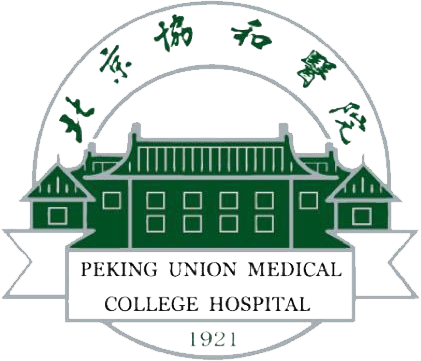The Joint Prevention and Control Mechanism of the State Council held a press conference on May 5, 2020 to introduce the work of a medical assistance team of Peking Union Medical College Hospital (PUMCH), which was sent to support the fight against the COVID-19 at the epicenter of Wuhan. From January 26 to April 15, the 186-member medical assistance team has brought the spirit, perspective, and experience of PUMCH to Wuhan and took charge of an emergency Intensive Care Unit of Tongji Hospital’s branch at the Sino-French New City.
The PUMCH team was one of the first to arrive in Wuhan but the last to leave, and the team was the largest among all medical assistance teams in Hubei province. Besides, it has treated the most critically ill patients and performed the most autopsies. International medical exchange with the team was also more frequent than with other teams, and it has enrolled more new Communist members than other teams. The PUMCH team has played a prominent role in treating patients with serious and critical COVID-19 and successfully wrapped up the tasks mandated by the country.
Zhang Shuyang, Party Secretary of PUMCH and leader of the hospital's medical assistance team, Han Ding, Vice President of PUMCH and co-leader of the team, Yan Xiaowei, deputy director of the Department of Internal Medicine, and Sun Hong, Party secretary of the Department of Gynecology and Pediatrics, attended the press conference and answered media questions.
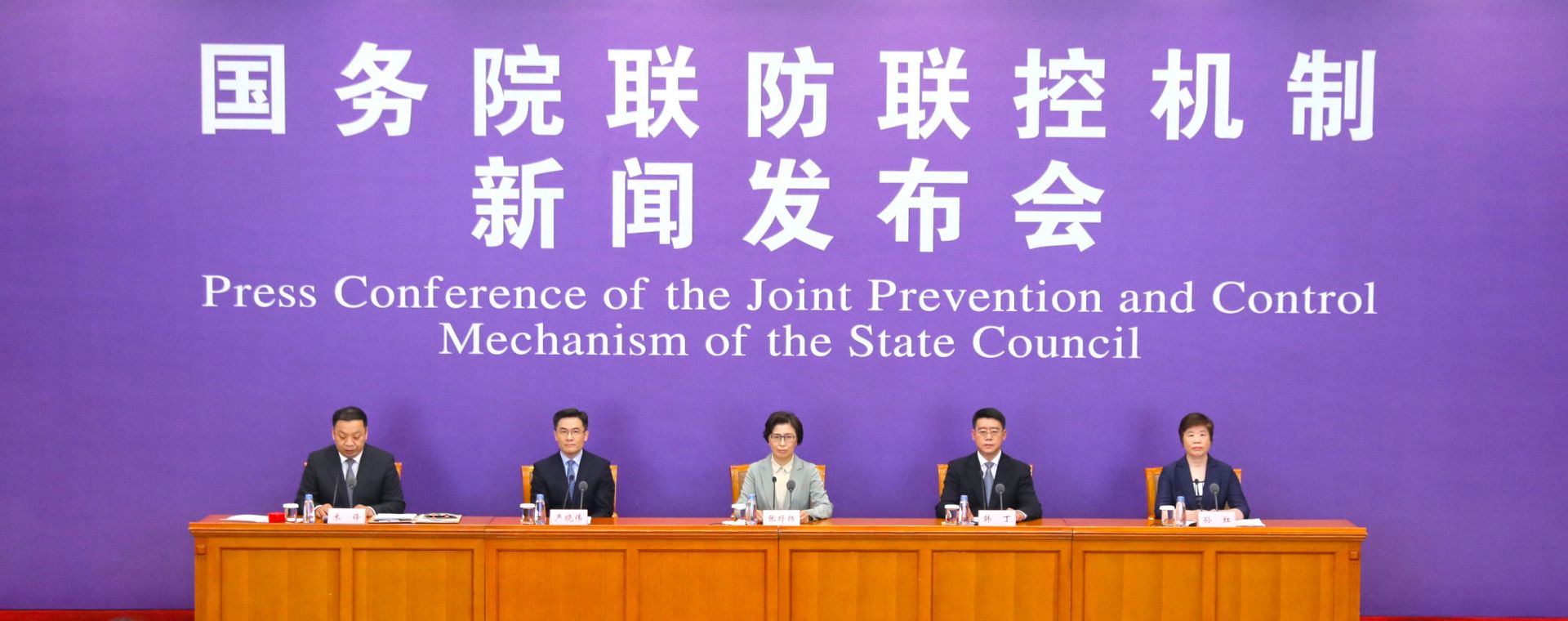
▲ At the press conference
China Education TV:
PUMCH’s team was the last national medical assistance team to leave Wuhan. Please tell us about the team’s challenges in Wuhan, as well as what you have learned and gained from the valuable experience.
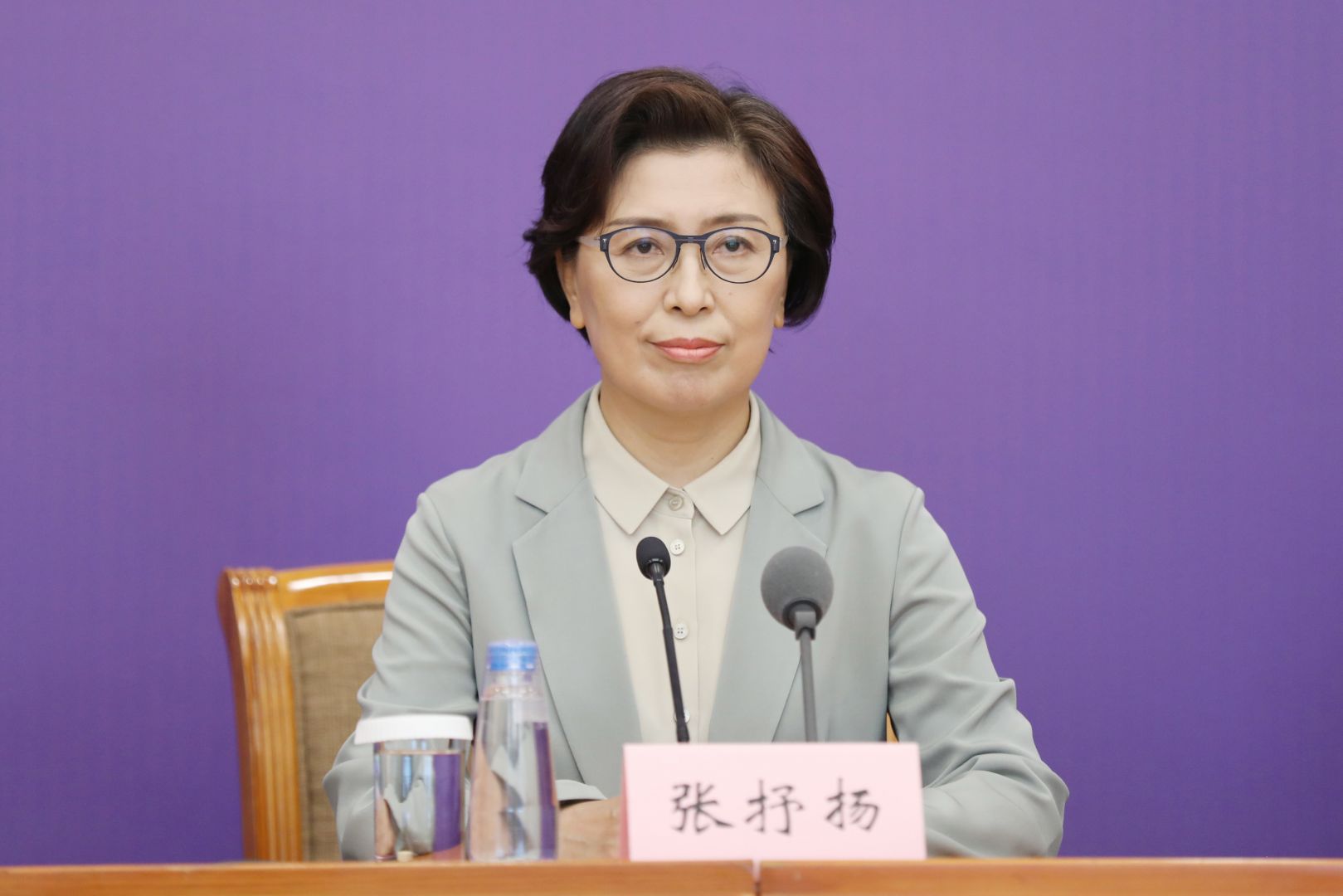
Zhang Shuyang, Party Secretary of PUMCH, leader of the medical assistance team, and an expert of cardiology
The epidemic situation is an order, while preventing and controlling the epidemic is our responsibility. Under the unified leadership and arrangement of the National Health Commission, PUMCH has assembled a medical team within 18 hours. More than 3,300 PUMCH staff applied to participate in frontline efforts to combat the novel coronavirus. Finally 186 medical staff went to Wuhan in four batches. The medical team was well-equipped, and one third of our members were from the departments of infectious diseases, respiratory medicine, and critical care medicine. Based on patient needs, PUMCH also sent members from the departments of nephrology, cardiology, and neurology. Our composition of the team was tailored to the needs of patients.
To assemble such a team with excellent medical skills and good ideological quality, equipment is very important. Medical supplies are basic necessities for victory. When we first arrived in Wuhan, we had opened two boxes prepared by our headquarter hospital and everyone was touched with tears. It was like “a mobile supermarket”. Female members were provided with daily necessities include hair ropes and sanitary napkins. We also had personal protective equipment (PPE) such as masks, goggles, and protective clothing. During our stay in Wuhan, we received more than 5,000 boxes of medical and daily supplies. We would like to express our heartfelt thanks to PUMCH and people from all walks of life for their strong support.
When we go to the frontline, how can we win the battle? We have strong academic support from PUMCH. We took over the ICU at Tongji Hospital’s branch at the Sino-French New Town and treated the most critically ill patients. We were their last hope for survival. Team members were grateful for the trust of Wuhan people and local medics. Based on clinical needs, PUMCH headquarter summoned 24 online multidisciplinary consultations with medical team in Wuhan. This experience has played an important role in improving cure rate and reducing death rate.
Our mission in Wuhan was not easy to be accomplished. Good medical supplies and excellent medical personnel doesn’t mean that we were free of difficulties. In the initial stage, Wuhan city had to deal with 2,000 to 3,000 new cases every day. Our members had never worked together in previous practice. We even didn’t know each other’s name. So, how to lead such a team and put them together to fight the war? We were not counting on any individual, we were counting on the collective power and wisdom of the whole team.
After arriving in Wuhan, we established a core team and held regular meetings with members of the core team. The core team had 21 members, including disciplinary experts, temporary Party secretary, and head nurses. No matter how busy we were in the daytime, the core team would meet at 8 p.m. every night. What did we discuss at the meeting? We followed two instructions from PUMCH President Zhao Yupei. The first was to do our best to treat patients, and the second was to ensure the safety of team members and bring them back to Beijing.
How to provide meticulous therapies to patients? We discussed patient conditions at evening meetings to work out the best treatment plans for them. In the morning experts made ward rounds and saw what else they could do, and then they discussed the plans with frontline doctors and nurses. This was a patient-centered and problem-based meeting that caters to the needs of patients. The meeting also established working processes and procedures, as well as a job list, and everybody was clearly aware of his/her duties. As we know, medics cannot work for too long when they wear protective gears. So it was very important to make a job list to make sure they are aware of what they need to do in the next hours. These standard procedures made patient management and treatment more professional, reasonable and orderly. In the face of the unprecedented epidemic, our core team worked together and overcame the challenges. In the toughest time, we were seeing mortality rate at a very high level. The team members were all anxious when discussing such a situation, but we never gave up and kept trying. The core team was really playing a critical role.
In addition, we have to mention our work in CPC party building. The first batch of team members arrived in Wuhan on January 26. The next morning, three medical staff submitted applications to join the Communist Party. We were deeply moved by their spirit. Frankly, I did not make ideological preparation when I led the team to the frontline, that is, how to do a good job of Party building in the frontline. A total of 52 team members submitted applications to join the Communist Party, and this compelled me to do a solid job in Party building under the direct leadership of the Party committee of PUMCH. I was glad that through Party building, our team maintained high morale and robust momentum during the work in Wuhan. The temporary Party branch organized 32 activities to integrate party construction with medical services; we held 37 "Epidemic Training" in the evening, and provided appropriate training courses to benefit the patients. We also organized 3 Party classes during the break time. Every activity was tearful for us. Every time they spoke from the bottom of their hearts, they moved me and all the people present. What we saw was that these young people really had a firm belief and they were determined to join the Communist Party of China. This has also firmed our faith to follow the Party, both in thought and in action.
Our special thanks go to colleagues at Tongji Hospital. They were dealing with hundreds of medical teams from other provinces, but they were quickly responding to our demands. The victory belongs to collective wisdom. All medics were making sacrifices under the guidance of professional spirit, and we have performed our duties as medical workers.
Society & Law Channel, CCTV
First of all, I would like to pay my respect to the medical team, and we are glad for your safe return. We know that most patients in Wuhan’s ICU zone were critically ill. So my question is that were the ICU patients in Wuhan more difficult to be treated than those in Beijing? What did you do to treat these patients? How about the curative effect? Has the case-fatality rate decreased?
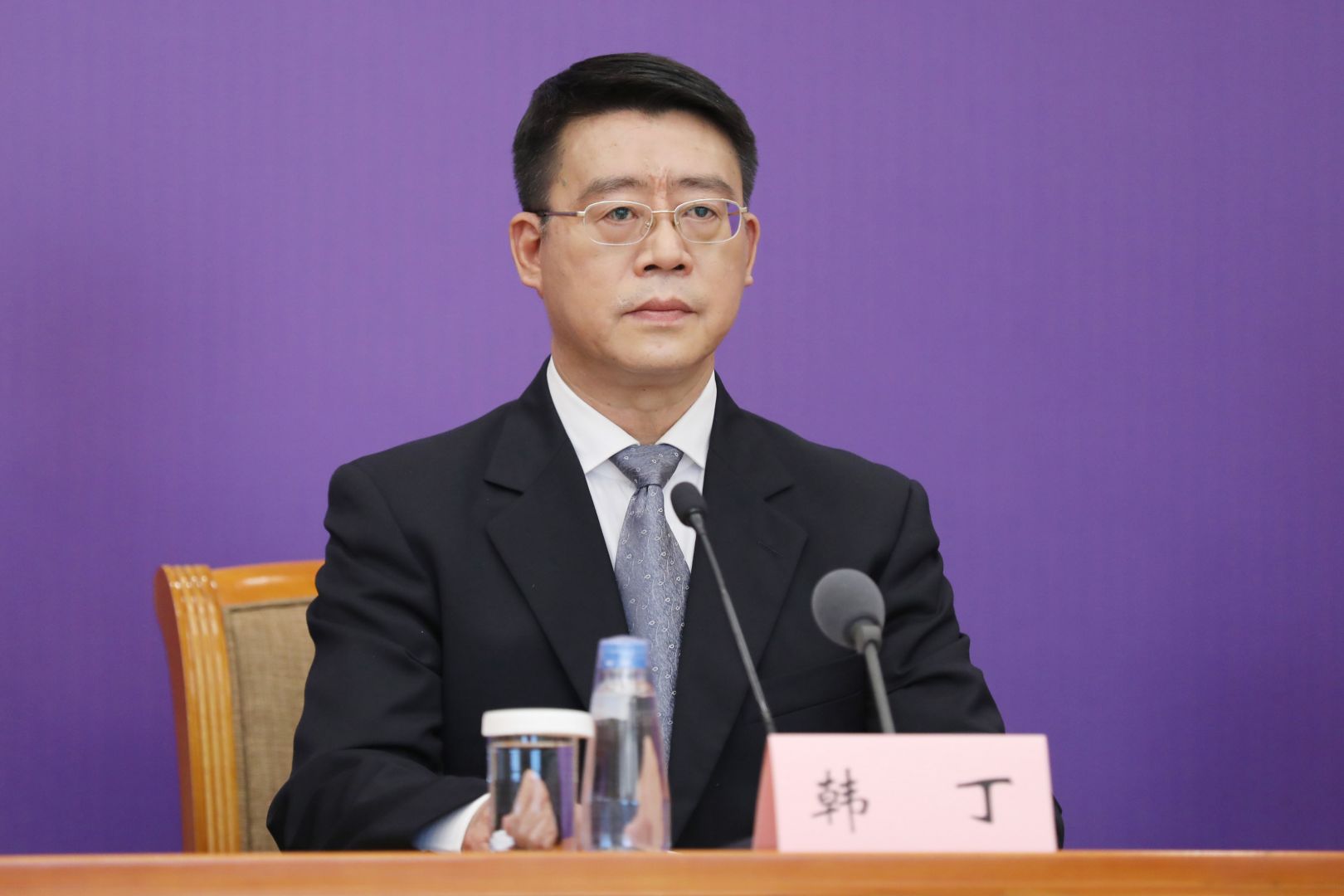
Han Ding, Vice President of PUMCH and joint leader of the team
Our medical team took charge of the ICU zone of Tongji Hospital’s branch at the Sino-French New City, and the patients were critically ill and transferred from other hospitals and zones. There were three major challenges compared to ICU work in Beijing. The first was that the critical COVID-19 patients had serious breathing problems, and many of them suffered from multiple organ and multiple system failures; the second was high intensity of work load - we once took in 18 patients in one night, and we were running out of respirators and oxygen machines during the peak; the third was that wearing protective gear made it more difficult for doctors and nurses to carry out operating procedures. However, nobody backed off despite the troubles. We tried every means to save lives.
Specifically, what did we do? Firstly, thanks to strong organization, we quickly drafted rules and standard procedures, like admission and discharge of patients, and even farewell procedures and telephone notifications to family members after a patient passed away. During the two-month period, we drafted more than 40 policies including work procedures, diagnosis & treatment standards, writing of medical records, and guidelines for three-level ward rounds. These documents formed a system of rules and policies and provided useful reference for frontline staff.
Secondly, in the initial stage we had limited knowledge about COVID-19. There were no effective drugs against the coronavirus. Therefore we had to count on our basic medical skills, following the PUMCH tradition “Three Basics, Three Stricts”. Our members moved forward all means of treatment, strengthened the integrated treatment and nursing, and enhanced medical cooperation and mutual support. We offered functional support and symptomatic treatment for patients with multiple organ and system failures, hoping to buy more time for the recovery of their impaired immune systems.
Thirdly, doctors should be at patients’ bedside to find out possible changes in patients’ conditions and evaluate the therapeutic effects. All doctors, including professors, must go to the wardrooms, and the core team members met every evening to discuss the cases one by one and figure out tailored therapies for every patient. To ensure the continuity of patient treatment, we introduced a policy that a small group of doctors must take charge of several patients, regardless of whether they were on duty or not. This arrangement ensured that a patient's treatment plan reflected the skills of the entire team, not an individual doctor. With our joint efforts, many patients were pulled out of danger, their respirators were removed, and they were transferred to general wardrooms.
Phoenix TV
According to media reports, roughly three quarters of medical assistance workers in Hubei were nurses. Nurses were everywhere, including the mobile cabin hospitals and ICU. Could you say something about the role of nurses in saving the lives of critical patients?
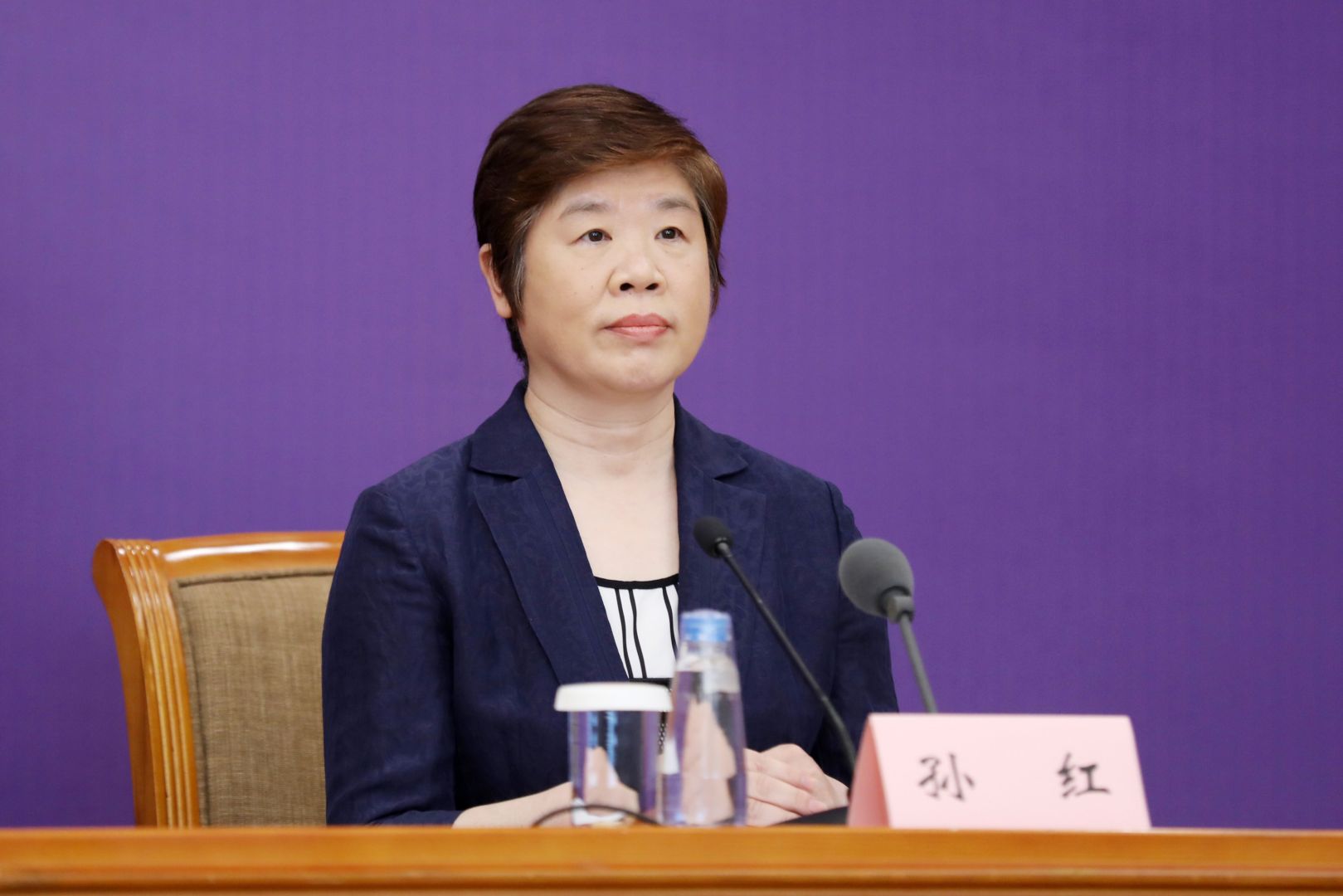
Sun Hong, Party Secretary of Departments of Gynecology and Pediatrics at PUMCH
Critical patients have some common problems. They cannot take care of themselves, their conditions change rapidly, and their organs require medicines or equipment support to remain functional.
For these critical patients, we introduced “one-to-one care”. Every patient had his or her tailored nursing plan. Our nurses observed changes in patients’ conditions, kept record of their vital signs, evaluated the treatment effect, and took effective measures to prevent complications. As there was no heating facility in Wuhan’s wardrooms, our nurses tried every means to keep patients warm. Some nurses brought their own electric blankets and thermal underwear to patients. Some patients had low body temperature, so nurses tried to provide more accurate temperature figures for the reference of doctors. Our team had some 40 specialty nurses from departments including critical care medicine, respiratory medicine, blood purification, nutrition, and geriatrics. Some nurses worked in SARS wards 17 years before, and their professional experience was particularly valuable for the team. For critical patients, life support devices and methods were used as much as possible, and our specialty nurses played leading roles.
During clinic practices, we noted that sputum suction had a direct impact on the prognosis of patients but also exposed nurses to higher risk of infection. We offered training to nurses about how to conduct sputum suction in a safe manner. With no fear or scare, they carried out effective and accurate sputum suction for critical patients. At the same time, supervising nurses and specialty nurses evaluated the effect of sputum suction to make it possible for patients to get through the worst conditions.
Once a patient transferred to our ward with serious breathing problems. Nurses used ECG monitoring, set up infusion channels, put on ventilation masks to start noninvasive ventilation, took blood test, and presented the test results to doctors. These steps were completed in about 15 minutes. But the patient's symptoms were not improved, and the doctor decided to intubate the trachea. Nurses quickly put the ventilator in place to prepare for intubation and started the second round of rescue.
Doctors and nurses played different roles during the rescue. They did different work, but they had more cooperation. They made the rounds together and discussed problems together. Nurses effectively and accurately implemented doctors’ treatment instructions, and at the same time provided doctors with accurate feedbacks, which were essential for successful rescue of patients.
I’m proud to say that our nurses have played a key role in the rescue of critical patients with COVID-19.
Macau Monthly
What did PUMCH do in the international exchange and cooperation about the prevention, control and treatment of COVID-19?
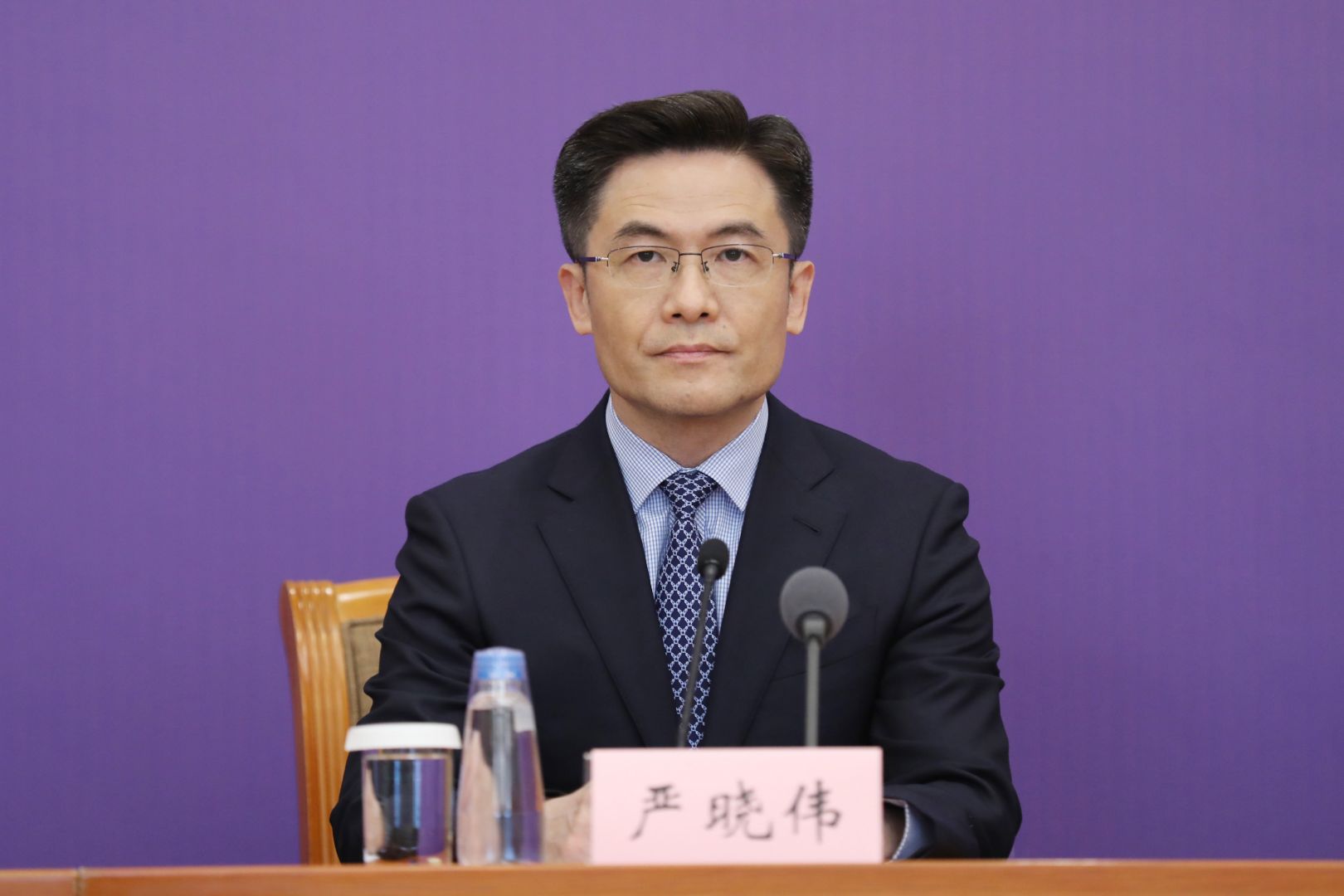
Yan Xiaowei, deputy director of the Department of Internal Medicine at PUMCH
We all know that COVID-19 is a novel infectious disease. In Wuhan, the PUMCH team has gained rich clinical experience through clinical practices and case summarization. In light of rapid spread of the virus worldwide, we think Chinese doctors are duty-bound to share our experience with foreign counterparts. Through our cooperation with CCTV and CGTN, we have arranged 20 online conferences with medical experts from a dozen countries about how to treat serious and critical patients and how to protect medics from possible infection. Basing on statistics from CGTN, readership of our epidemic-related reports has exceeded 100 million.
In addition to busy work schedule, our doctors also used their spare time to attend online meetings and share their experience in the treatment and prevention of COVID-19. Besides, our doctors spoke English during the whole sessions so as to better convey their experience to foreign doctors. The experience and therapies came from people battling in the frontline, and their sharing received good response from international community. Our international peers spoke highly of our valuable experience, our dedication, and our excellent international communication skills.
Hong Kong Economic Information & Agency
Prof. Zhang, we know that you led PUMCH team to Wuhan at the peak of the epidemic. When you look back to the days in Wuhan, what was the biggest challenge for you? How did you solve it?
Zhang Shuyang, Party Secretary of PUMCH, leader of the medical assistance team, and an expert of cardiology
I still clearly remember February 7. We held a farewell ceremony at 10 a.m. None of our team members, including me, dared to answer phone calls from colleagues or family members, or have eye contacts. We were afraid of bursting into tears over their worry before we set out for Wuhan. Many staff shed tears when they saw their colleagues on the name list of medical assistance team. They worried whether we could return safely.
After the ceremony, we took a group photo and boarded a bus to the airport. I can still remember the scene in the plane. It was very quiet; nobody said anything except the flight attendant talking about precautions during the flight. I was very sad. I really had no idea about what would happen to the team in Wuhan and whether I could bring all of them back. A group of nurses started to work in ICU the night we arrived in Wuhan. Not long after the plane landed in Wuhan and we dropping off the luggage, we started medical training.
The first training is about how to wear and take off PPE. In fact, we had training before coming to Wuhan, but this time was different. After medical staff put on the protective clothes, head nurses and doctors would check whether we wear masks, goggle, and protective clothes in a correct manner, and only after we passed the check we could enter the ward zone. When I saw our members opened the door and entered the red zone, I was very worrisome. Every time I asked them to return safely.
Weather conditions changed rapidly in Wuhan. Sometimes there were snows and hailstones, and windy and rainy days were more common. Patients said they were very cold, while medical staff members were sweating in the ward because they put on protective clothes. After taking off the protective gear, they were also trembling. Sometimes some people were running a fever, coughing or having a sore throat. We were very worried, and wondering whether they were infected with the virus. In order to address our worries, PUMCH headquarter assigned 2 more laboratory staff to Wuhan. They did COVID-19 tests for our team members, patients, and for possible virus in the ICU ward. All the cleaning and disinfection work was done by nurses, and their safety was a huge challenge for us. Now I’m glad to say that all of our team members are safe, and no one was infected.
Another problem was that we had little information about the new disease at that time. Although we had dealt with SARS, the new coronavirus was different from SARS. We often felt overwhelmed when treating patients. The first issue for us was how to get a better picture of the disease. We encouraged every doctor and nurse to spend more time with patients, to look at the changes of their conditions, and to learn about their reaction to treatment, which was particularly important for understanding the disease. When we had close contact with patients, it was also a kind of humanistic care for them. For comatose patients, we shouted at them and called their names to see whether they could hear us and whether they were responding to our therapy.
Besides, we also actively carried out autopsy. Medical advances depend highly on autopsy. Our team earned a high level of trust from patients and their families. Also, the team called the families on a daily basis and informed them about patient conditions. As we were dealing with a highly contagious disease, and patients’ families were not allowed to enter the ward. Only our medical staff gave love and care to the patients. This kind of communication has brought us closer to patients, just like a familly. Our work was also supported by patients’ families. I would like to pay respect to the deceased patients and their families for donating their bodies for medical research. Autopsy can give us a deeper understanding of the disease, not only limited to clinic symptoms and functional changes, but also what happened to our organs. As long as we know more about the virus, we can make better assessment, advance the treatment plans, and use appropriate therapies to pull patients out of danger.
Our team members were risking their own lives to take care of the patients. To ensure their safety, our hospital had made the utmost efforts and received support and care from all sides. It was an extraordinary achievement that none of the 42,000 non-Hubei medical assistance workers has been infected with the virus. It's really not an easy job. Chinese medical workers have gone through such a big test, and we have done a good job in the test. You can see this team is trustworthy and excellent.
CCTV
The first medical team of PUMCH witnessed the city’s toughest period from entire lockdown to a stepwise restart. Some team members told the interview that this was the longest time they had been in Wuhan, and they were deeply moved by the people of Wuhan. Can you share some stories?
Sun Hong, Party Secretary of the department of Gynecology and Pediatrics at PUMCH
We were most impressed by Wuhan citizens’ resilience, strong mind, and their awareness to sacrifice themselves for the interest of the entire country. These qualities are well respected.
Our camp was next to a residential community of several hundreds of households. When we looked into the community in the daytime, nobody was hanging around, but lights were up at most houses in the evening. We respect Wuhan people for their endurance in the past months.
There was an old patient who passed away despite a month of rescue efforts. When we asked if we could perform autopsy on her body, her daughter said yes without any hesitation. She said her mother was a professor, and mother would understand the decision if she learned that her body could make some contribution to medical research. When the doctor asked in the phone what else we could do for her, she said she hopes to meet with the doctors and nurses taking care of her mother, and express her gratitude to them for being with her mother in her last moment. We met the daughter and bowed to show the respect of our entire team.
In fact, every citizen in Wuhan was quietly serving others and medical teams. We are impressed by bus drivers, attendants, and security guards who served us every day. They could not go home and had to stay in the camp, so they had spent 80 days with us in Wuhan. A bus driver surnamed Zhou was the most impressive for our team. Every time he arrived at the camp in advance and left for the hospital on time, and he was absent only one day. We later learned that his father passed away, and he took leave for funeral affairs. In less than 24 hours, he showed up in the camp. He said he had promised to be with us until the last day, and he would hold out to the end. He was not on the bedside when his father passed away, and there was no video footage, but he did not regret. Team members were upset by his story; they made some donations, and thanked him for his enduring support and company. After parting ways, friendship will last.
Shenzhen Special Zone Daily
As one of the national referral centers offering diagnostic and therapeutic care of complex and rare disorders, what’s your experience from the treatment of critical patients of COVID-19?
Yan Xiaowei, deputy director of Internal Medicine at PUMCH
So far, there have been no effective or targeted medicines to kill the virus or contain inflammation storm caused by the virus. When a huge number of critical patients were admitted to ICU in Wuhan, our silver bullet were, as just mentioned by Vice President Han, “Three Basics and Three Stricts”. “Three Basics” are basic theories, basic knowledge, and basic skills. “Three Stricts” meaning strict requirements, strict organization, and strict attitude. There are core experiences of “the century PUMCH”.
In addition, all PUMCH staff are inheriting the hospital’s spirit of " diligence, ever-improving, hard-work, and dedication ". The good traditions of PUMCH, outstanding medical experts, hardworking and devoted frontline medics were solid foundation for us to win the fight against the COVID-19 outbreak.
So, what did we really do to win the battle? First of all, we have made a series of policies, rules, and standards. So that verybody knew what to do when a patient was admitted and when his/her conditions deteriorated. Thus, we could always act in accordance with SOP under emergency situations.
Secondly, we have introduced PUMCH traditions into the ICU zone in Wuhan, such as the three-level ward round system. After the morning shift, all professors went to the bedside to examine patients’ first-hand information, and discussed treatment plans according to their changing conditions. We divided doctors-on-duty into first-line and second-line doctors. When they could not deal with difficult cases, they might contact the third-line professors anytime to ensure the quality of medical services at the wardrooms.
Thirdly, we had a well-established collective consultation mechanism. We established an expert team in Wuhan, including professors specialized in critical care medicine, respiratory diseases, and infections as well as experts in cardiology and nephrology. After the daily rounds, professors sat together to assess critical patients’ conditions and figured out appropriate treatment plans. The collective consultation mechanism has been emphasized in the PUMCH’s century-old history. Through collective consultation, experts developed individualized and all-round treatment plans and offered respiratory, circulatory and nutritional support. Other interventions included prevention and management of infections, regulation of immune disorders, blood adsorption/hemofiltration, and traditional Chinese medicine. The tailored treatment for every individual patient was based on the collective wisdom.
In addition to joint consultation of the expert team every morning, we also established communications with our headquarters in Beijing. We hoped to provide the most appropriate individualized treatment for critical patients through expert consultation. We done our best to provide appropriate supportive therapies for them, and our efforts indeed produced good results. Our patients survived longer in the ICU, and many of them were transferred to general wards without respirator support. These results suggested our treatment measures and strategies worked.
With regard to all-round support, I would like to talk about anticoagulant therapy. We found that 50-60% of ICU patients in Wuhan had cold purple extremities, which even became black or necrotic in some cases. It was actually a manifestation of limb ischemia. Discussions among experts in the frontline and hematologists in Beijing concluded that it was caused by the damages to endangium by the coronavirus and might also by a hypercoagulation state following inflammatory storm caused by the coronavirus. Thus, the anticoagulant therapy was particularly important. After anticoagulant therapy, the black and necrotic limbs were remarkable improvement. For some critically ill patients, anticoagulant and antiplatelet therapies achieved satisfactory results.
This example is just one of many successful stories in Wuhan. There are a lot to share in the whole treatment process, and I’d like to stress three experiences - PUMCH’s traditions, multidisciplinary collaboration, and all-round individualized medical support.
Cover News
How did public hospitals such as PUMCH play the role of early detection and early treatment in the fight against COVID-19? Many large public hospitals, including PUMCH, have played an important role in the fight against SARS and H1N1 epidemics. How to enhance the role of public hospitals in responding to large public health incidents?
Han Ding, Vice President of PUMCH and co-leader of the team
During the epidemic, large public hospitals have effectively reduced mortality rate and increased cure rate, and this is a concrete example of China’s institutional advantage by amassing national resources to deal with important matters. But infectious diseases must be contained through a combination of prevention and control measures, and prevention should be prioritized. So it is very important to take the epidemic as an opportunity to establish a sound epidemic prevention and control system, including improving public awareness and spreading knowledge about infectious diseases.
Large public hospitals are an important part of the system. Patients do not know whether they have contracted infectious disease. Hospitals must strengthen the system of early identification, triage, and preliminary examination. At the same time, there should be set of realizable and sustainable management systems to ensure patients can be found and identified, and the disease control centers can be notified in the first time to take appropriate actions outright.
Second, nosocomial infection should be curbed and medical staff should be well protected. Some medical staff were infected in the initial stage of the COVID-19 epidemic. We need to strengthen training so that every medical worker can participate in the hospital’s epidemic prevention and control efforts.
Third, one of the biggest problems exposed in this epidemic is that the epidemic has a great impact on the normal operation of public hospitals. This is a problem that must be considered and solved, that is, according to the characteristics of infectious diseases and prevention & control requirements, we should build a ward zone in some independent places of the hospital to house patients with infectious diseases, where independent medical waste and sewage treatment system should also be established. Large hospitals can build special infection building or P3 laboratory, and these are important facilities. They can be used to accommodate general patients at ordinary days; when an epidemic or pandemic occurs, the infectious disease hospitals are often overwhelmed and cannot admit all patients, and then the general hospitals can play their emergency roles.
Fourth, it’s even more important to identify and divide the pollution zone, buffer zone, and clean zone, so that normal medical services will not be disrupted during an epidemic, and the general hospitals can also participate in the control of an infectious disease. This is very important.
According to Mi Feng, a spokesman at the National Health Commission, the Joint Prevention and Control Mechanism of the State Council had held 100 news conferences as of May 5, 2020, and 266 guests answered 1,190 questions at these conferences. At the conferences, we witnessed the country struggling in a chilly winter and then welcoming a blossoming spring, and witnessed medical aid teams rushing to Hubei at the epicenter of the epidemic and then making a safe and triumphant return. The 100 press conferences have told stories from difficult to heartwarming and demonstrated Chinese people’s spirit of getting united and helping each other to get through the tough times.
